
Handbook of Jealousy: Theory, Research, and Multidisciplinary Approaches By
2010 | 587 Pages | ISBN: 1405185791 | PDF | 6 MB
Through a compilation of original articles, the Handbook of Jealousy offers an integrated portrait of the emerging areas of research into the nature of jealousy and a forum for discussing the implications of the findings for theories of emotional and socio-cognitive development. Presents the most recent findings and theories on jealousy across a range of contexts and age-stages of development Includes 23 original articles with empirical findings and detailed commentaries by leading experts in the field Serves as a valuable resource for professionals in the fields of clinical psychology, psychiatry, and social work, as well as scholars in the fields of psychology, family studies, sociology, and anthropology Content: Chapter 1 Jealousy in Western History (pages 5-26): Peter N. StearnsChapter 2 Loss, Protest, and Emotional Development (pages 27-39): Michael LewisChapter 3 Jealousy and Romantic Love (pages 40-54): Aaron Ben?Ze'evChapter 4 The Ontogenesis of Jealousy in the First Year of Life (pages 55-82): Sybil L. HartChapter 5 Neural Structures of Jealousy (pages 83-100): Gabriela Markova, James Stieben and Maria LegersteeChapter 6 The Evolutionary Sources of Jealousy (pages 101-120): Jaak PankseppChapter 7 Sibling Rivalry in the Birds and Bees (pages 121-143): Scott ForbesChapter 8 Green Eyes in Bio?Cultural Frames (pages 144-160): Vasudevi ReddyChapter 9 Social Bonds, Triadic Relationships, and Goals (pages 161-191): Maria Legerstee, Baila Ellenbogen, Tom Nienhuis and Heidi MarshChapter 10 Jealousy in Infant-Peer Trios (pages 192-234): Ben S. BradleyChapter 11 Parental Reports of Jealousy in Early Infancy (pages 235-266): Riccardo Draghi?LorenzChapter 12 Jealousy in Autism Spectrum Disorders (ASD) (pages 267-292): Nirit BaumingerChapter 13 Is Jealousy a Complex Emotion? (pages 293-311): R. Peter HobsonChapter 14 What Is Missing in the Study of the Development of Jealousy? (pages 312-328): Joseph J. Campos, Eric A. Walle and Audun DahlChapter 15 A Theoretical Model of the Development of Jealousy (pages 329-361): Sybil L. HartChapter 16 Jealousy and Attachment (pages 362-386): R. M. Pasco Fearon, Marian J. Bakermans?Kranenburg and Marinus H. van IjzendoornChapter 17 The Development of Sibling Jealousy (pages 387-417): Brenda L. Volling, Denise E. Kennedy and Lisa M. H. JackeyChapter 18 The Socialization of Sibling Rivalry (pages 418-442): Sybil L. HartChapter 19 Family Triangular Interactions in Infancy (pages 443-476): Elisabeth Fivaz?Depeursinge, Nicolas Favez, Chloe Lavanchy Scaiola and Francesco LopesChapter 20 Culture, Parenting, and the Development of Jealousy (pages 477-497): Heidi Keller and Bettina LammChapter 21 Social Class, Competition, and Parental Jealousy in Children's Sports (pages 498-515): Noel DyckChapter 22 When Friends Have Other Friends (pages 516-546): Jeffrey G. Parker, Sara A. Kruse and Julie Wargo AikinsChapter 23 Jealousy in Adulthood (pages 547-571): Christine R. Harris and Ryan S. Darby
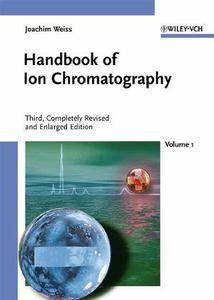
Handbook of Ion Chromatography, Third, completely revised and updated edition By Joachim Weiss(auth.)
2004 | 904 Pages | ISBN: 3527287019 | PDF | 16 MB
The third edition of this standard reference by one of the pioneers in the field has been completely revised and doubled in size to cover the numerous developments with respect to applications and instrumentation. Now running to two volumes, added chapters or sections include: - A new chapter devoted to ion exchange chromatography - Hyphenation with mass spectrometry, including ICP/MS - Applications for analysis of carbohydrates, proteins and nucleic acids - Validation of ion-chromatographic methods With its additional new figures and chromatograms, this handbook remains unparalleled in its timeliness and comprehensiveness.Content: Chapter 1 Introduction (pages 1-11): Chapter 2 Theory of Chromatography (pages 13-25): Chapter 3 Anion Exchange Chromatography (HPIC): Sections 3.1-3.7 (pages 27-168): Chapter 3 Anion Exchange Chromatography (HPIC): Sections 3.8-3.10 (pages 168-278): Chapter 4 Cation Exchange Chromatography (HPIC) (pages 279-357): Chapter 5 Ion?Exclusion chromatography (HPICE) (pages 359-392): Chapter 6 Ion?Pair Chromatography (MPIC) (pages 393-459): Chapter 7 Detection Methods in Ion Chromatography (pages 461-547): Chapter 8 Quantitative Analysis (pages 549-586): Chapter 9 Applications: Sections 9.1-9.4 (pages 587-697): Chapter 9 Applications: Sections 9.5-9.8 (pages 697-797): Chapter 9 Applications: Sections 9.9-9.11 (pages 797-839):
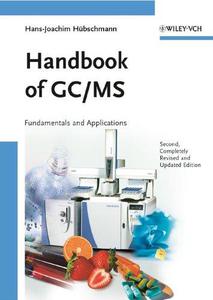
Handbook of GC/MS: Fundamentals and Applications, Second Edition By Dr. Hans?Joachim Hubschmann(auth.)
2008 | 732 Pages | ISBN: 352731427X | PDF | 9 MB
This is the first comprehensive reference work for GC/MS now in its second edition. It offers broad coverage, from sample preparation to the evaluation of MS-Data, including library searches. Fundamentals, techniques, and applications are described. A large part of the book is devoted to numerous examples for GC/MS-applications in environmental, food, pharmaceutical and clinical analysis. These proven examples come from the daily practice of various laboratories. The book also features a glossary of terms and a substance index that helps the reader to find information for his particular analytical problem. The author presents in a consistent and clear style his experience from numerous user workshops which he has organized. This is a thoroughly revised and updated English edition based on an edition which was highly successful in Germany.Content: Chapter 1 Introduction (pages 1-6): Chapter 2 Fundamentals (pages 7-292): Chapter 3 Evaluation of GC/MS Analyses (pages 293-420): Chapter 4 Applications (pages 421-645): Chapter 5 Glossary (pages 647-691):

Handbook of Fluid Dynamics and Fluid Machinery: Applications of Fluid Dynamics, Volume III By
1996 | 638 Pages | ISBN: 0471140902 | PDF | 62 MB
Content: Chapter 23 Fluid Dynamic Related Technologies (pages 1591-1846): Herbert S. Cheng, Malcom J. Crocker, Edward E. Zukoski, Julian Szekely, Raymond M. Hicks, Earl H. Dowell, E. Eugene Larrabee, Helmut Sockel, Sam P. Jones, James D. de Laurier, Fayette S. Collier, Fredrick G. Hammitt, William G. Day, Franklin T. Dodge, Allen E. Fuhs and A. George HavenerChapter 24 Fluid Dynamics in Nature (pages 1847-1989): Jackson R. Herring, Jack E. Cermak, Wayne L. Neu, Everett V. Richardson, Panayiotis Diplas, Richard H. Rand, George T. Yates, Geoffrey R. Spedding, James D. de Laurier, David P. Hoult and George D. AshtonChapter 25 Static Components of Fluid Machinery (pages 1991-2186): Bharatan R. Patel, C. Samuel Martin, John E. Minardi, Philip C. Stein, Reiner Decher, James L. Younghans, James L. Keirsey, William B. Shippen and Everett J. HardgraveChapter 26 Positive Displacement Compressors, Pumps, and Motors (pages 2187-2217): Richard NeerkenChapter 27 Turbomachinery (pages 2219-2576): David Japikse, Walter S. Gearhart, Robert E. Henderson, J. Gordon Leishman, Nicholas A. Cumpsty, Colin Rodgers, Terry Wright, Michael W. Volk, Edward M. Greitzer, Michael V. Casey, Helmut Keck, William G. Steltz, Tsukasa Yoshinaka, P. Sampath, Hany Moustapha, Ernest W. Upton, Louis V. Divone and Daniel F. AnconaChapter 28 Hydraulic Systems (pages 2577-2617): Hugh R. MartinChapter 29 Compressed Systems (pages 2619-2628): John P. Rollins

Handbook of Fire and the Environment: Impacts and Mitigation
English | 2023 | ISBN: 3030943550 | 502 Pages | PDF (True) | 28 MB
The fundamental purpose of this handbook is to raise awareness about environmental impacts of fire and fire suppression, primarily within the fire engineering and firefighting communities, but also within the environmental engineering and planning disciplines. The Handbook provides readers with a fundamental understanding of the problem and its magnitude and includes a set of tools and methods for assessing environmental, social and financial impacts, and a set of tools for identifying and selecting appropriate mitigation options.
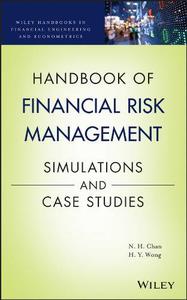
Handbook of Financial Risk Management: Simulations and Case Studies By N.H. Chan, H.Y. Wong(auth.)
2013 | 421 Pages | ISBN: 0470647159 | PDF | 8 MB
This authoritative handbook illustrates practical implementation of simulation techniques in the banking and financial industries through use of real-world, time-sensitive applications. Striking a balance between theory and practice, it demonstrates how simulation algorithms can be used to solve practical problems and showcases how accuracy and efficiency in implementing various simulation methods can be used as indispensable tools in risk management. It also covers topics such as volatility, fixed-income derivatives, LIBOR Market Models, risk measures, and includes over two-dozen recognized simulation models.Content: Chapter 1 An Introduction to Excel VBA (pages 1-32): Chapter 2 Background (pages 33-70): Chapter 3 Structured Products (pages 71-119): Chapter 4 Volatility Modeling (pages 121-175): Chapter 5 Fixed?Income Derivatives I: Short?Rate Models (pages 177-216): Chapter 6 Fixed?Income Derivatives II: LIBOR Market Models (pages 217-253): Chapter 7 Credit Derivatives and Counterparty Credit Risk (pages 255-301): Chapter 8 Value?at?Risk and Related Risk Measures (pages 303-341): Chapter 9 The Greeks (pages 343-380):

Handbook of Explosion Prevention and Protection By
2004 | 720 Pages | ISBN: 3527307184 | PDF | 6 MB
Between them, the renowned team of editors and authors have amassed unparalleled experience at such institutes as BAM, PTB, Pittsburgh National Institute for Occupational Health and Safety, BASF AG, and the University of Göttingen. In this work-the first of its kind for 35 years-they describe in detail those measures that prevent or limit industrial explosions and the damage so caused. They cover various preventative methods, as well as the current state of technology combined with data gained through experimentation. This handbook offers operational, planning, design and safety engineers working in industry, government agencies and professional associations in-depth knowledge of the scientific and technical basics, allowing them to apply explosion protection according to any given situation.Content: Chapter 1 Explosion Processes (pages 1-60): Prof. Dr. H. Gg. WagnerChapter 2 Ignition Processes (pages 61-270): Dr. Helmut Kramer, Dr. Martin Glor, Prof. Dr. Henrikus Steen, Dr. Markus Goedde, Dr. Heino Bothe, Dipl.?Ing. Eberhard Behrend, Dr?Ing. Klaus Ritter, Prof. Dr. H. Gg. Wagner, Dr.?Ing. Willi Hensel, Dr.?Ing. Ulrich Krause, Dr. Ulrich Loffler and Dr. Winfried KarlChapter 3 Properties of Reactive Gases and Vapours (Safety Characteristics) (pages 271-377): Dr. Elisabeth Brandes, Dr. Siegmund Dietlen, Dr. Hartmut Hieronymus, Dr.?Ing. Ulrich Krause, Dr. Bodo Plewinsky, Dr. Tammo Redeker, Dr. Volkmar Schroder and Prof. Dr. Karlheinz HoyermannChapter 4 Properties of Combustible Dusts (Safety Characteristics) (pages 379-417): Dr.?Ing. Willi Hensel and Kenneth L. CashdollarChapter 5 Properties of Flammable Mists and Foams (pages 419-480): Dr. Hans Forster, Dr. Bodo Plewinsky and Dr. Hartmut HieronymusChapter 6 Measures of Explosion Protection and Prevention (pages 481-610): Prof. Dr. Henrikus Steen, Dr. Martin Hattwig, Dr.?Ing. Ulrich Krause, Dr. Christophe Proust, Dipl.?Ing. Richard Siwek, Dr. Hans Forster and Dr. Wolfgang WiechmannChapter 7 Fundamentals of Understanding and Judging Explosion Risks (pages 611-639): Prof. Dr.?Ing. Henrikus Steen
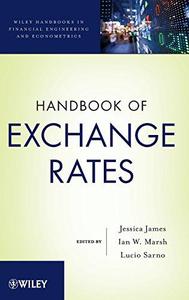
Handbook of Exchange Rates By
2012 | 830 Pages | ISBN: 0470768835 | PDF | 8 MB
Praise for Handbook of Exchange Rates"This book is remarkable. I expect it to become the anchor reference for people working in the foreign exchange field."?Richard K. Lyons, Dean and Professor of Finance, Haas School of Business, University of California Berkeley"It is quite easily the most wide ranging treaty of expertise on the forex market I have ever come across. I will be keeping a copy close to my fingertips."?Jim O'Neill, Chairman, Goldman Sachs Asset ManagementHow should we evaluate the forecasting power of models? What are appropriate loss functions for major market participants? Is the exchange rate the only means of adjustment? Handbook of Exchange Rates answers these questions and many more, equipping readers with the relevant concepts and policies for working in today's international economic climate.Featuring contributions written by leading specialists from the global financial arena, this handbook provides a collection of original ideas on foreign exchange (FX) rates in four succinct sections:* Overview introduces the history of the FX market and exchange rate regimes, discussing key instruments in the trading environment as well as macro and micro approaches to FX determination.* Exchange Rate Models and Methods focuses on forecasting exchange rates, featuring methodological contributions on the statistical methods for evaluating forecast performance, parity relationships, fair value models, and flow-based models.* FX Markets and Products outlines active currency management, currency hedging, hedge accounting; high frequency and algorithmic trading in FX; and FX strategy-based products.* FX Markets and Policy explores the current policies in place in global markets and presents a framework for analyzing financial crises.Throughout the book, topics are explored in-depth alongside their founding principles. Each chapter uses real-world examples from the financial industry and concludes with a summary that outlines key points and concepts.Handbook of Exchange Rates is an essential reference for fund managers and investors as well as practitioners and researchers working in finance, banking, business, and econometrics. The book also serves as a valuable supplement for courses on economics, business, and international finance at the upper-undergraduate and graduate levels.Content: Chapter 1 Foreign Exchange Market Structure, Players, and Evolution (pages 1-44): Michael R. King, Carol Osler and Dagfinn RimeChapter 2 Macro Approaches to Foreign Exchange Determination (pages 45-71): Menzie ChinnChapter 3 Micro Approaches to Foreign Exchange Determination (pages 73-110): Martin D. D. Evans and Dagfinn RimeChapter 4 The Exchange Rate in a Behavioral Finance Framework (pages 111-132): Paul De Grauwe and Pablo Rovira KaltwasserChapter 5 The Evolution of Exchange Rate Regimes and Some Future Perspectives (pages 133-158): Paul R. MassonChapter 6 Purchasing Power Parity in Economic History (pages 159-187): Lawrence H. OfficerChapter 7 Purchasing Power Parity in Tradable Goods (pages 189-220): Ian W. Marsh, Evgenia Passari and Lucio SarnoChapter 8 Statistical and Economic Methods for Evaluating Exchange Rate Predictability (pages 221-263): Pasquale Della Corte and Ilias TsiakasChapter 9 When Are Pooled Panel?Data Regression Forecasts of Exchange Rates More Accurate than the Time?Series Regression Forecasts? (pages 265-281): Nelson Mark and Donggyu SulChapter 10 Carry Trades and Risk (pages 283-312): Craig BurnsideChapter 11 Currency Fair Value Models (pages 313-342): Gino Cenedese and Thomas StolperChapter 12 Technical Analysis in the Foreign Exchange Market (pages 343-373): Christopher J. Neely and Paul A. WellerChapter 13 Modeling Exchange Rates with Incomplete Information (pages 375-390): Philippe Bacchetta and Eric van WincoopChapter 14 Exchange Rates in a Stochastic Discount Factor Framework (pages 391-420): Hanno Lustig and Adrien VerdelhanChapter 15 Volatility and Correlation Timing in Active Currency Management (pages 421-447): Pasquale Della Corte, Lucio Sarno and Ilias TsiakasChapter 16 Active Currency Management Part I: Is There a Premium for Currency Investing (Beta) (pages 451-469): Geoffrey Kendrick and Saeed AmenChapter 17 Active Currency Management Part II: Is There Skill or Alpha in Currency Investing? (pages 471-501): Richard M. Levich and Momtchil PojarlievChapter 18 Currency Hedging for International Bond and Equity Investors (pages 503-543): Kristjan KasikovChapter 19 FX Reserve Management (pages 545-561): Michael J. PaulusChapter 20 High Frequency Finance: Using Scaling Laws to Build Trading Models (pages 563-584): Alexandre Dupuis and Richard B. OlsenChapter 21 Algorithmic Execution in Foreign Exchange (pages 585-597): James E. DaltonChapter 22 Foreign Exchange Strategy Based Products (pages 599-621): Aysu SecmenChapter 23 Foreign Exchange Futures, Forwards, and Swaps (pages 623-645): Naohiko Baba, Yuji Sakurai and Frank PackerChapter 24 FX Options and Volatility Derivatives: An Overview from the Buy?Side Perspective (pages 647-696): Oleg SvirschiChapter 25 A Common Framework for Thinking about Currency Crises (pages 697-716): Robert Flood, Nancy Marion and Juan Yepez AlbornozChapter 26 Official Intervention in the Foreign Exchange Market (pages 717-749): Marcel FratzscherChapter 27 Exchange Rate Misalignment-The Case of the Chinese Renminbi (pages 751-765): Yin?Wong CheungChapter 28 Choosing an Exchange Rate Regime (pages 767-784): Jeffrey A. Frankel
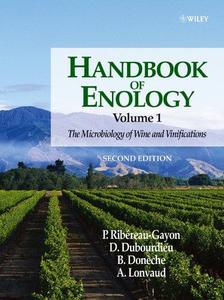
Handbook of Enology: The Microbiology of Wine and Vinifications, Volume 1, 2nd Edition By Professor Pascal Ribereau?Gayon, Denis Dubourdieu, Bernard Doneche, Aline Lonvaud(auth.)
2005 | 497 Pages | ISBN: 0470010347 | PDF | 5 MB
The "Microbiology" volume of the new revised and updated Handbook of Enology focuses on the vinification process. It describes how yeasts work and how they can be influenced to achieve better results. It continues to look at the metabolism of lactic acid bacterias and of acetic acid bacterias, and again, how can they be treated to avoid disasters in the winemaking process and how to achieve optimal results. The last chapters in the book deal with the use of sulfur-dioxide, the grape and its maturation process, harvest and pre-fermentation treatment, and the basis of red, white and speciality wine making. The result is the ultimate text and reference on the science and technology of the vinification process: understanding and dealing with yeasts and bacterias involved in the transformation from grape to wine. A must for all serious students and practitioners involved in winemaking.Content: Chapter 1 Cytology, Taxonomy and Ecology of Grape and Wine Yeasts (pages 1-51): Chapter 2 Biochemistry of Alcoholic Fermentation and Metabolic Pathways of Wine Yeasts (pages 53-77): Chapter 3 Conditions of Yeast Development (pages 79-113): Chapter 4 Lactic Acid Bacteria (pages 115-137): Chapter 5 Metabolism of Lactic Acid Bacteria (pages 139-159): Chapter 6 Lactic Acid Bacteria Development in Wine (pages 161-181): Chapter 7 Acetic Acid Bacteria (pages 183-192): Chapter 8 The Use of Sulfur Dioxide in Must and Wine Treatment (pages 193-221): Chapter 9 Products and Methods Complementing the Effect of Sulfur Dioxide (pages 223-240): Chapter 10 The Grape and its Maturation (pages 241-297): Chapter 11 Harvest and Pre?Fermentation Treatments (pages 299-325): Chapter 12 Red Winemaking (pages 327-395): Chapter 13 White Winemaking (pages 397-443): Chapter 14 Other Winemaking Methods (pages 445-480):

Handbook of Drinking Water Quality, Second Edition By John De Zuane(auth.)
1996 | 562 Pages | ISBN: 047128789X | PDF | 37 MB
"Well-written and informative." --Richard Lewis, Lewis Information Systems "This ook combines information which could possibly have required as many as four reference sources in the past." --Steven C. Messer In its first edition, John De Zuane's popular reference drew wide praise for being an insightful theoretical resource. Now, in the second edition of Handbook of Drinking Water Quality, De Zuane builds on that legacy with the same practical and conceptual emphases, adding a wealth of new information that provides immediate access to the data and guidelines needed to * understand the impact of drinking water parameters on public health * help build and operate water supply facilities * conduct reliable drinking water sampling, monitoring, and analytical evaluation * implement potability standards from the source to the treatment facility, to storage, to the tap * write new standards and expand/modify existing standards as quickly as needed Preventing contamination of drinking water requires a multidisciplinary perspective, one that incorporates elements of bacteriology, chemistry, physics, engineering, public health, preventive medicine, and control and evaluation management. In a concise, easy-to-use format, Handbook of Drinking Water Quality, Second Edition, describes * Data and guidelines from the World Health Organization and the European Community used to develop drinking water standards * U.S. drinking water standards--their physical, chemical, microbiological, and radionuclide parameters and monitoring requirements * EPA-approved analytical methods and the most effective treatment technologies for each contaminant * Critical concepts of water quality control as applied in water treatment in conventional or chemical treatment plants * Disinfection and fluoridation requirements * Common problems with water distribution systems, including dead ends, sediments, bacterial growth, insufficient pressure, and main breaks To keep pace with recent breakthroughs in scientific research, water analysis, and program implementation and monitoring, this Second Edition features expanded and updated information on * All drinking water regulations issued since the previous edition in 1990 * Current drinking water standards adopted by the European Community * Lead poisoning, radon, and Cryptosporidium * Compulsory water treatment for lead and copper * Coliform Rule compliance (disinfection and filtration) * Trihalomethane reduction with ozonation As a quick reference, handbook, and technical manual Handbook of Drinking Water Quality, Second Edition, is an essential volume for engineers, water supply and treatment personnel, environmental scientists, public health officials, or anyone responsible for assuring the safety of drinking water.Content: Chapter 1 Potable Water (pages 1-17): Chapter 2 General or Physical Parameters (pages 19-47): Chapter 3 Chemical Parameters - Inorganics (pages 49-148): Chapter 4 Chemical Parameters-Organic Compounds (pages 149-295): Chapter 5 Microbiological Parameters (pages 297-329): Chapter 6 Radionuclide Paramters (pages 331-353): Chapter 7 Carcinogens (pages 355-365): Chapter 8 Water Analyses (pages 367-399): Chapter 9 Public Health Regulations (pages 401-417): Chapter 10 Water Treatment (pages 419-481): Chapter 11 Federal Regulations (pages 483-513):


